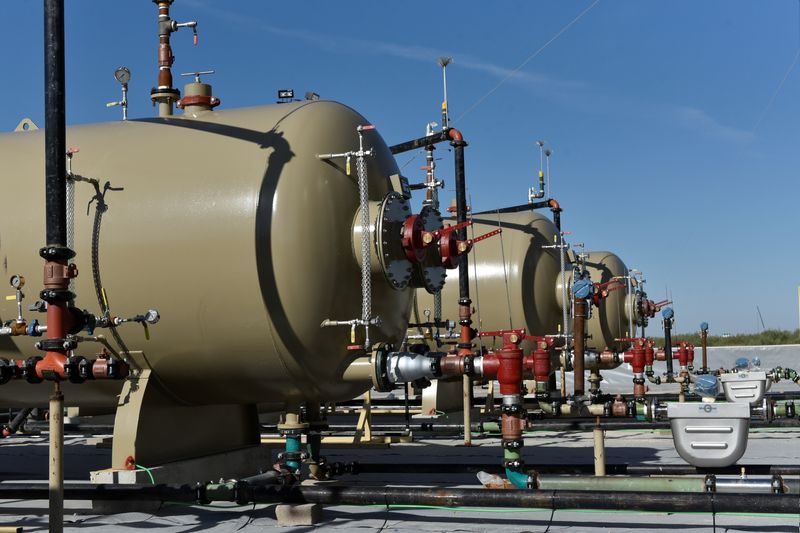(Bloomberg) -- Oil rose as industry data pointed to a drop in U.S. stockpiles and traders monitored possible European Union curbs on Russian crude.
West Texas Intermediate rebounded above $103 a barrel after sinking more than 2% on Tuesday on concern that anti-virus lockdowns in China are pummeling energy demand. The American Petroleum Institute reported a drop of about 3.5 million barrels in crude stockpiles, as well as draws in gasoline and distillate holdings, according to people familiar with the figures.
Oil has been buffeted by volatility this year, while posting monthly gains, as Russia’s invasion of Ukraine rocks markets and investors prepare for central banks to tighten policy to contain elevated inflation. The U.S. Federal Reserve is expected to raise interest rates by 50 basis points later on Wednesday, and policy makers may signal even more aggressive hikes later this year.
The U.S. and U.K. have already moved to ban Russian crude, and there’s pressure for the European Union to follow suit, especially after Moscow choked off natural gas supplies to Poland and Bulgaria. Officials in the bloc are in the process of framing a fresh package of sanctions against Moscow.
The API estimates, which will be followed by government figures later Wednesday, point to increased tightness in product markets. The U.S. diesel crack spread -- a gauge of the profitability of turning crude into diesel -- has surged this year as countries cut back on Russian fuel, depleting supplies.
Oil investors are also counting down to a meeting on Thursday of the Organization of Petroleum Exporting Countries and its allies on production policy. The 23-nation group is expected to ratify another modest supply increase amid signs that the alliance is failing to deliver agreed-upon volumes.
Oil markets remain in backwardation, a bullish pattern in which nearer-term contracts trade at a premium to those further out. Brent’s prompt spread -- the differential between its two nearest contracts -- was $1.31 a barrel in backwardation, up from 37 cents a barrel a week ago. So far this year, the global benchmark’s prompt spread has averaged about $1.82 a barrel.
©2022 Bloomberg L.P.
